6 May, 2002
The Wind
I learned some important lessons about the Arctic today. Lesson one was that
no matter how strong the winds are, they can always get stronger. Yesterday I
tried to describe the howling winds of the North Slope. I was impressed with
the strength and the consistency of the winds blowing through the camp. Last
night, those winds got even stronger. There were several times during the
night that it was impossible to sleep due to both the sound and the constant
battering of the dorm trailer. This morning, the winds were so strong that I
found it extremely difficult just to shut the door to my room. As challenging
as the winds are, some are their side effects create even more treacherous
conditions. The blowing snow stings your eyes and face and finds its way
into every little gap in your clothing. Near the road, the winds create
drifts several feet deep where the road had just been cleared only hours and
sometimes minutes before. Our departure to our second collecting site was
delayed for about an hour this morning while we waited for the road out of
the camp to be cleared. The winds blew continuously until about 1 o'clock
this afternoon when they just abruptly stopped. The ensuing silence was
almost as disturbing as the winds had been. Where minutes before there had
been a deafening howling, we suddenly could hear the saws of the kitchen
construction crew. I would not be disappointed to forego any more experience
with the Arctic wind.
My second lesson of the day came as we were heading out to the second
collection site. I learned that when traveling in the Arctic, pacing oneself
is extremely important. Trudging through deep snow is a very physically
demanding experience. Often you must travel while breaking through three or
more feet of snow with every step. Breaking through the snow as you step is
known as post-holing. I was often post-holing in snow past my knees.
Perhaps due to my desire to get out of the wind or simply because I was not
paying attention, I began to move much too quickly through the snow. Within
10-15 minutes my legs were noticeably fatigued and I was sweating heavily
under my parka and Carhartt overalls. Being sweaty and fatigued is a very
dangerous thing in the Arctic. I stopped to wait for the rest of my group and
immediately the wind found its way under my parka. Luckily the temperatures
are a bit warmer today or I could have easily become hypothermic. It was good
timing to learn an extremely important lesson.
Our collection site for today was on an exposed ridge about three miles south
of Toolik. The lack of shelter meant that the ground was frozen completely
solid. Recovering the cans required the use of a chisel and a hammer to chip
away at the frozen soil. Breaking through to recover the cans was very
similar to chipping away rock or concrete. The beetles within the soil seem
to protect themselves somewhat by snuggling up close to a small rock or
pebble. This way, they are not completely frozen into the soil around them.
Having now recovered the test cans from both sites, the next several days
will be spent testing the beetles in the lab trailer and searching the rocky
ridges and outcroppings for other concentrations of Arctic insects.
One nice result of the heavy winds has been the exposure of large areas of
ground. When we arrived, everything was covered with snow. By this afternoon,
large areas of tundra were exposed so that we could see the plant life
underneath. From a distance, the tundra right now looks dark with hues of
brown and gray. In fact, from much closer, the plants have a great deal of
color. Reds, yellows, and many shades of green have been hidden under the
snow all winter. As the plants begin to grow with the spring thaw, those
colors will cover the bare ground create a landscape rich in many different
hues.
Over the next few days, I will hopefully see many of the early spring changes
of the tundra.
Communications are still a big problem, so I will try to get journals out
first and photos as I am able.
PS. I want to wish the best of luck to the Sycamore High School Envirothon
teams for their regional competition tomorrow.
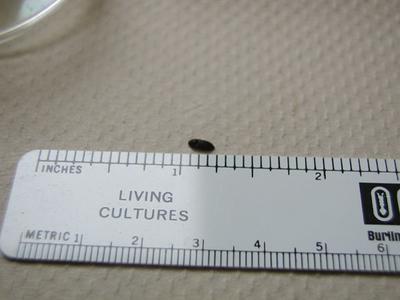
This is one of the Click Beetles we are looking for at Toolik.
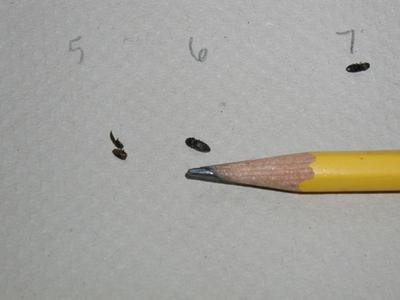
This is another look at Click Beetles.
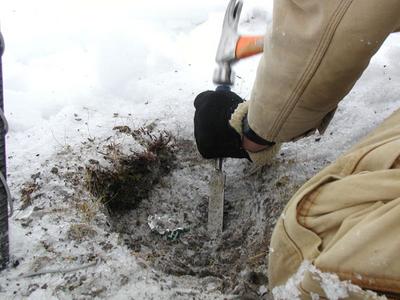
The frozen ground forces us to use chisels and hammers to recover the beetle cans.
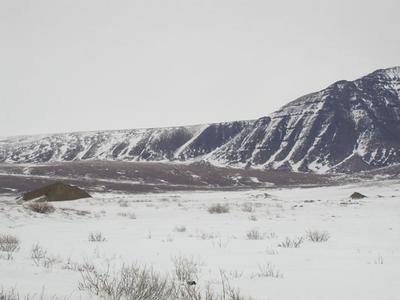
This a view of the Tundra from a distance. From here it looks very barren and desolate.
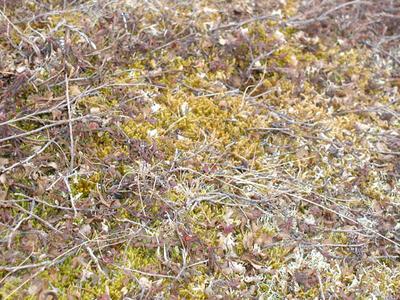
From much closer, you can see the colors of plant life in the Tundra.
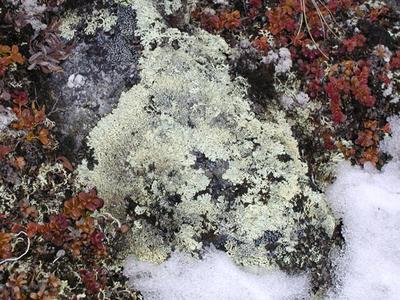
The vegetation of the Tundra comes in thousands of different colors and shades.
Contact the TEA in the field at
.
If you cannot connect through your browser, copy the
TEA's e-mail address in the "To:" line of
your favorite e-mail package.
|
